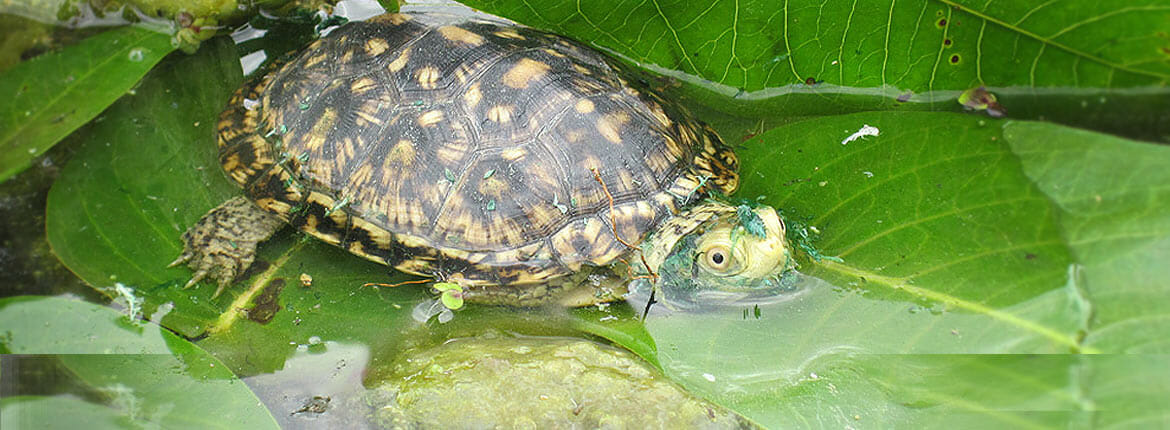Implications of Personality in Blanding’s Turtles
Reintroduction programs involve raising animals in a captive setting, often from birth or hatching, and then releasing them into suitable wild habitats. Personality traits have been linked with survivorship in reintroduced animals. However, much of the research conducted on the success of reintroduction programs has focused on mammalian species. Better understanding the factors that impact survival in herpetological reintroduction programs could improve their success and contribute to the conservation of these ecologically important, but often underappreciated species.
For this reason, we measured personality traits in 24 Blanding’s turtles prior to release into their natural habitat. The Detroit Zoological Society collaborates with the U.S. Fish & Wildlife Service to raise turtles hatched at the Zoo and release them into a wetland habitat in the Shiawassee National Wildlife Refuge. This process, known as headstarting, is meant to allow individual animals to grow to a certain age or physical size in order to increase chances of survival. The turtles are tracked by investigators from the University of Michigan-Flint for up to two years after release using radio telemetry to assess survival.
We are investigating links between dispersal, survival, personality and habitat type. This type of information can be very valuable to ensure optimal survival in future releases. Preliminary results indicate that turtles that explored their environments at the zoo more also traveled further distances, were more often observed in the water and spent more time basking (a beneficial thermoregulatory behavior) after they were released into the wild. Knowing how different personality types are likely to respond after release can help future conservationists set animals up for success by releasing them in areas that suit their behavioral needs.



